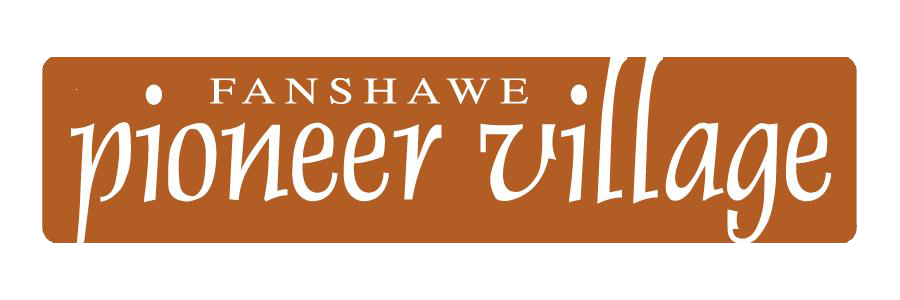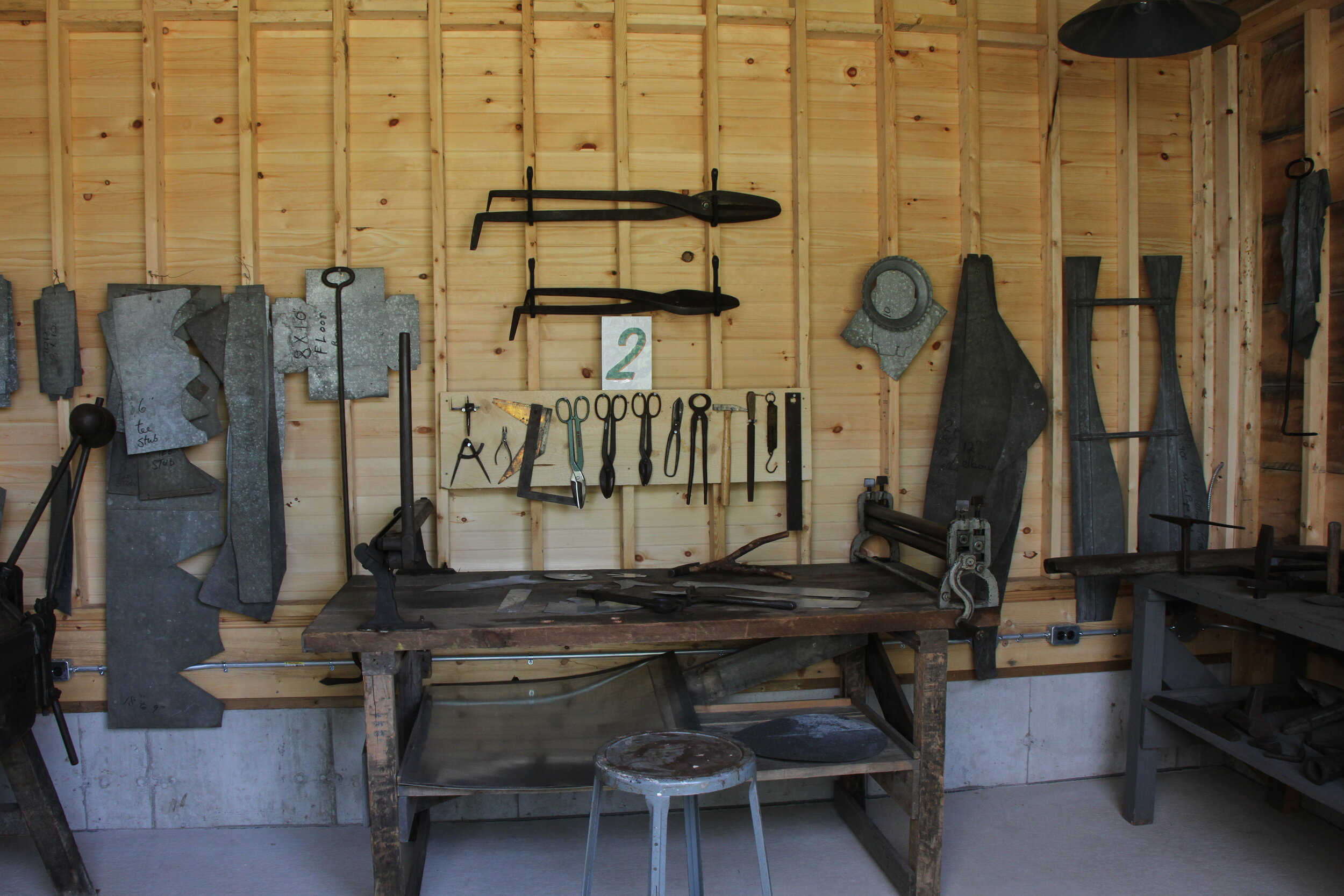Tinsmith Shop
Replica Building
Built 2017
Representative of a 1920s Tinsmith Shop
Tinsmiths have practiced their trade in Canada since the 18th century. Early tinsmiths used tinplate, solder, and a few simple tools to produce their wares. They learned their trade by serving an apprenticeship of 4 to 6 years under a master tinsmith, and began by learning how to create simple objects such as cookie cutters and pill boxes. Once the apprenticeship was completed many young tinsmiths took to the road as peddlers or “tinkers,” visiting farms and small communities prior to opening their own tinsmith shop.
By the mid-1800s, most towns in Canada had a resident tinsmith who made a variety of tin goods for both farm and household use. Popular items that could be found in such a shop included scoops, lanterns, buckets, pots and pans. Tinsmiths also produced building components such as stove-pipes and eavestroughing.
Products made from tin became increasingly popular due to their versatility and relatively inexpensive cost, and were often used to replace objects made from pewter, wood and earthenware. The demand for tinware brought about the development of the first handpowered cutting and forming machines which improved efficiency and sped up production of the finished products.
London’s central Ontario location made it an ideal regional centre for a diverse group of businesses and services, including a number of tin shops. By the turn of the century tinsmiths were not only supplying household and agricultural products, but were also installing furnaces and ductwork for central heating in homes. Many shops, such as McClary Manufacturing Ltd. of London, expanded rapidly to meet consumer demand for these new products.
Tinmen of London
Barnett & Ronald
Alfred Barnett’s career as a tinsmith began in the 1920s when he apprenticed with Cecil Ridsdale in Galt, Ontario. In 1927 he moved to the London area and partnered with Earl Ronald to open “Barnett & Ronald”, which specialized in warm air heating, eavestroughing, furnace repairs, and metal work. The business established locations at 100 Ross Street, St. Thomas, and 351 Wellington Street, London. Alfred joined London Metal Services Limited in the 1940s, where he helped many sheet metal shops get through the war years with rationed steel. He eventually became the owner of London Metal Services Limited, and was joined in the business by his sons Robert and William. Alfred continued to work with passion and an unwavering commitment to his customers until his retirement in the 1970s.
Miller Brothers
In 1918, George and Wilfred Miller purchased the business of James Park located at 663 Dundas Street, London, Ontario, officially opening “Miller Brothers Tinsmith Shop”. George and his family lived above the shop, and in 1923 he took over sole ownership of the business. George’s son Wesley joined him in 1929 and for decades they worked alongside each other, fabricating ductwork, repairing eavestroughs and installing furnaces. When George died in 1956, Wesley took over the business. After Wesley hurt his hand in 1982 his son Alfred joined the shop, and their work often became more specialized – from making reproduction architectural pieces to custom cookie cutters. When Wesley passed away in 1998, Alfred became the third generation to operate Miller Brothers, serving a loyal customer base until his retirement in 2004.
Supported by the Canada 150 Community Infrastructure Program, the Sifton Family Foundation, the Good Foundation Inc., the Rotary Club of London.








